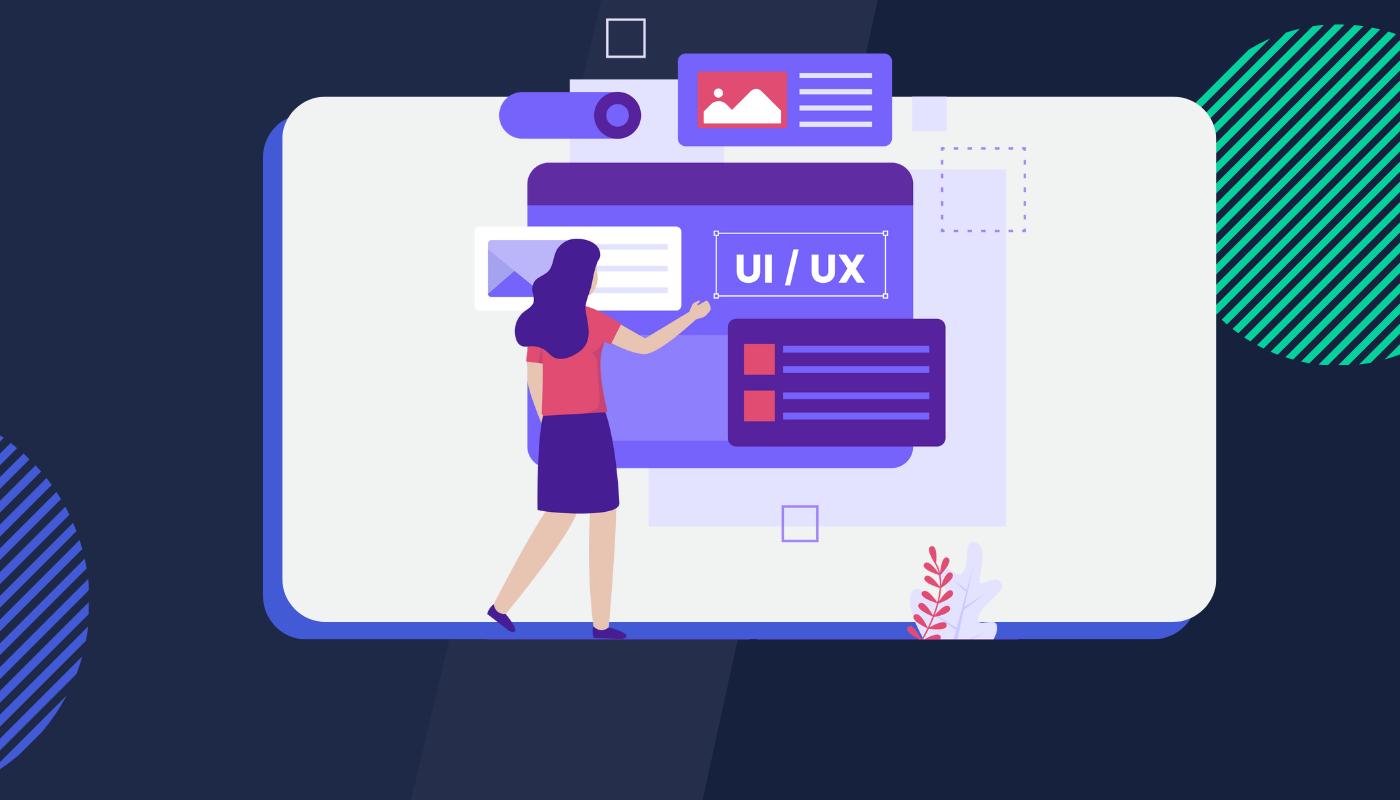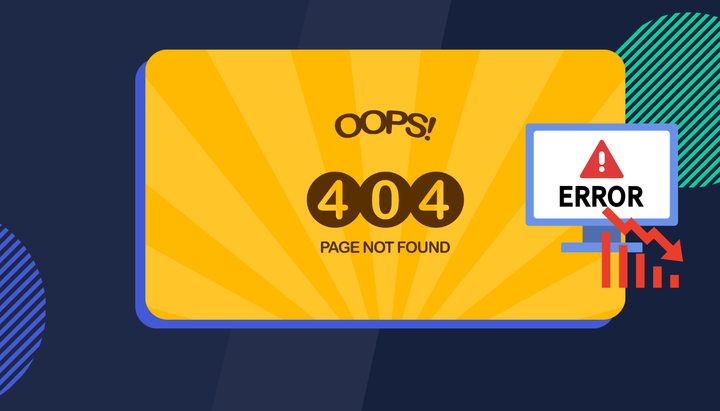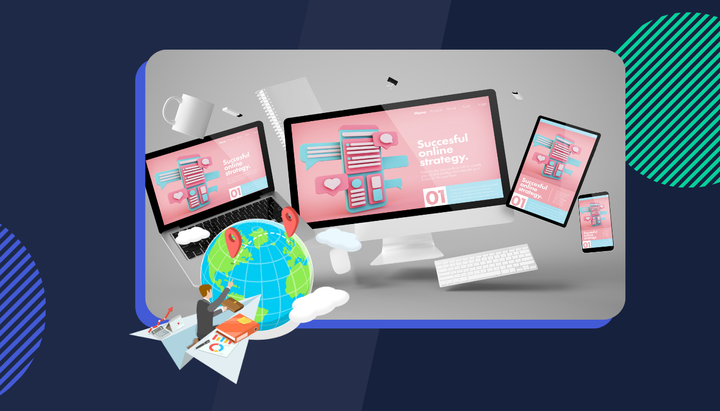Why digital experience matters for conversion rate optimisation
Optimising the experience of users on your website can unlock massive conversion and revenue results - here's how to do it.
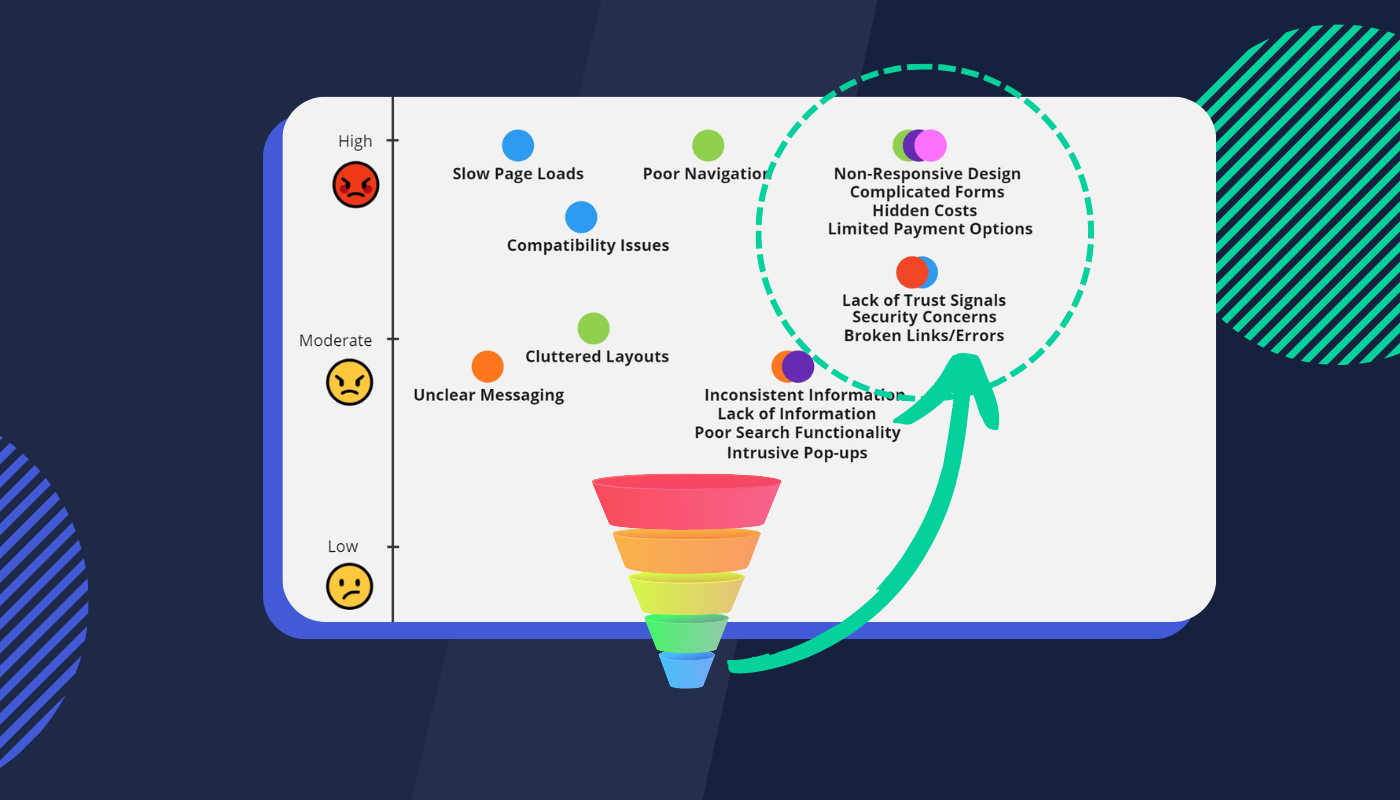
Digital experience plays a crucial role in website conversion rate optimisation for several reasons, especially when selling products or services online, including retail, insurance, or financial services.
Our team has been attending a few online retailer events this year and a common story we've heard from the market is that website traffic is up but there hasn't been an expected increase in conversions and sales flowing through.

When we dig a little deeper we find this is almost always due to moments of friction in the digital experience occurring somewhere in the (digital) customer journey as users go from learning about a product through to the conversion point. Seamless experiences are key to higher conversion rates.
Why digital experience matters
A seamless and enjoyable digital experience ensures that visitors find what they need quickly and easily, leading to higher satisfaction and a greater likelihood of conversion. Optimising digital experiences minimises obstacles that might prevent users from completing desired actions, such as making a purchase or filling out a form, thereby increasing conversion rates.
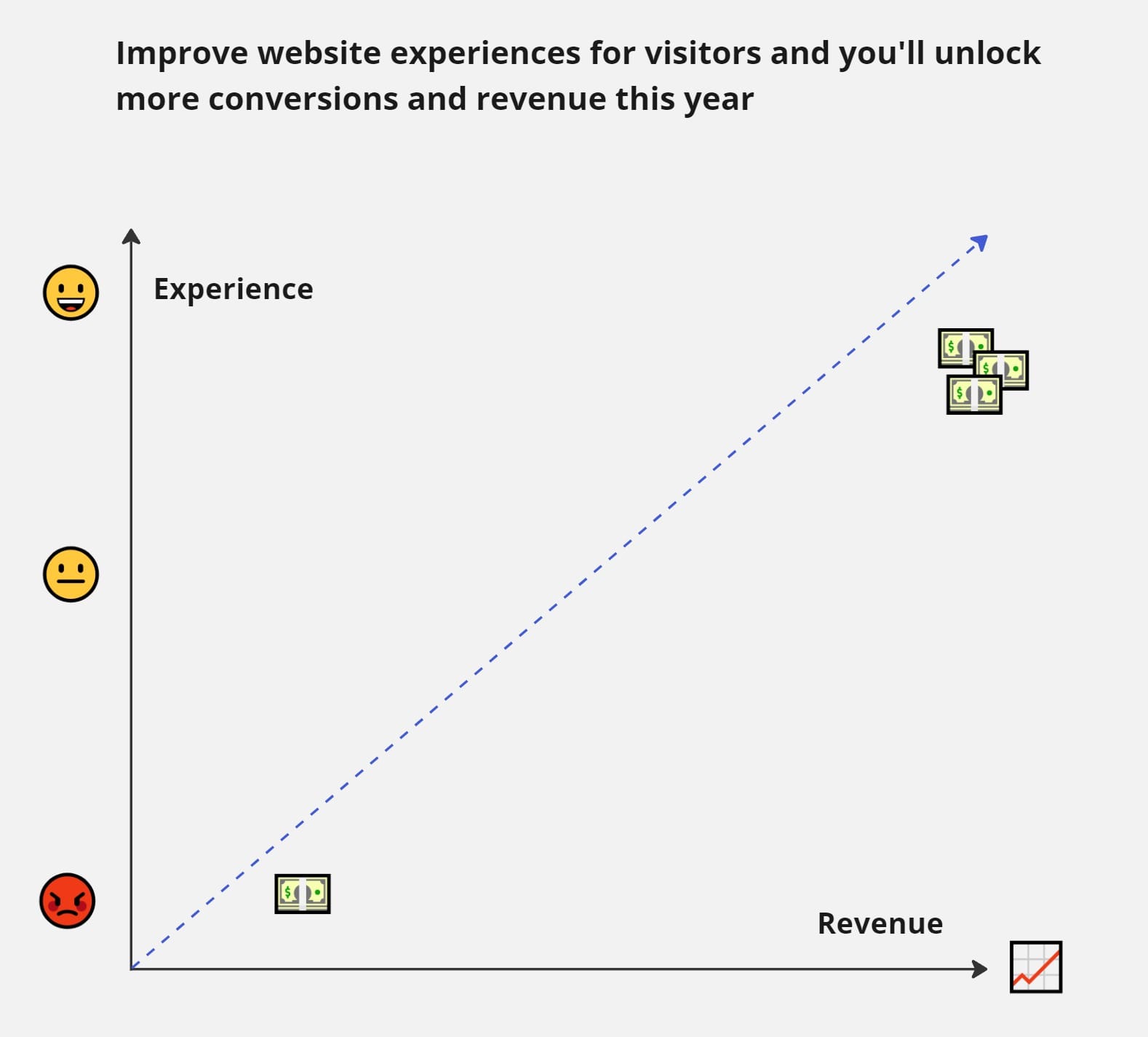
A well-designed and user-friendly website builds trust and credibility, which is particularly important for industries like insurance and financial services where customers are making significant decisions. Leveraging experience analytics allows businesses to tailor content and offers to individual user preferences, enhancing the relevance and appeal of the website. All of this can massively help to drive conversion rates higher.
An engaging digital experience also keeps visitors on the site longer and encourages interaction with various elements, increasing the chances of conversion. With a significant portion of users accessing websites via mobile devices, a responsive and optimised mobile experience is essential for capturing and converting mobile traffic.
Another benefit is that providing a superior digital experience can differentiate your business from competitors, making it more likely that customers will choose your products or services over others.
What does digital experience friction look like?
Digital experience friction on a website refers to any element or obstacle within the user journey that hinders or complicates the process of completing desired actions, such as making a purchase, signing up for a service, or filling out a form. These frictions can manifest as technical issues, poor design, confusing navigation, slow load times, or irrelevant content, and they negatively impact the overall user experience. As a result, such frictions can significantly reduce conversion rates by causing frustration, abandonment, and loss of trust among visitors.
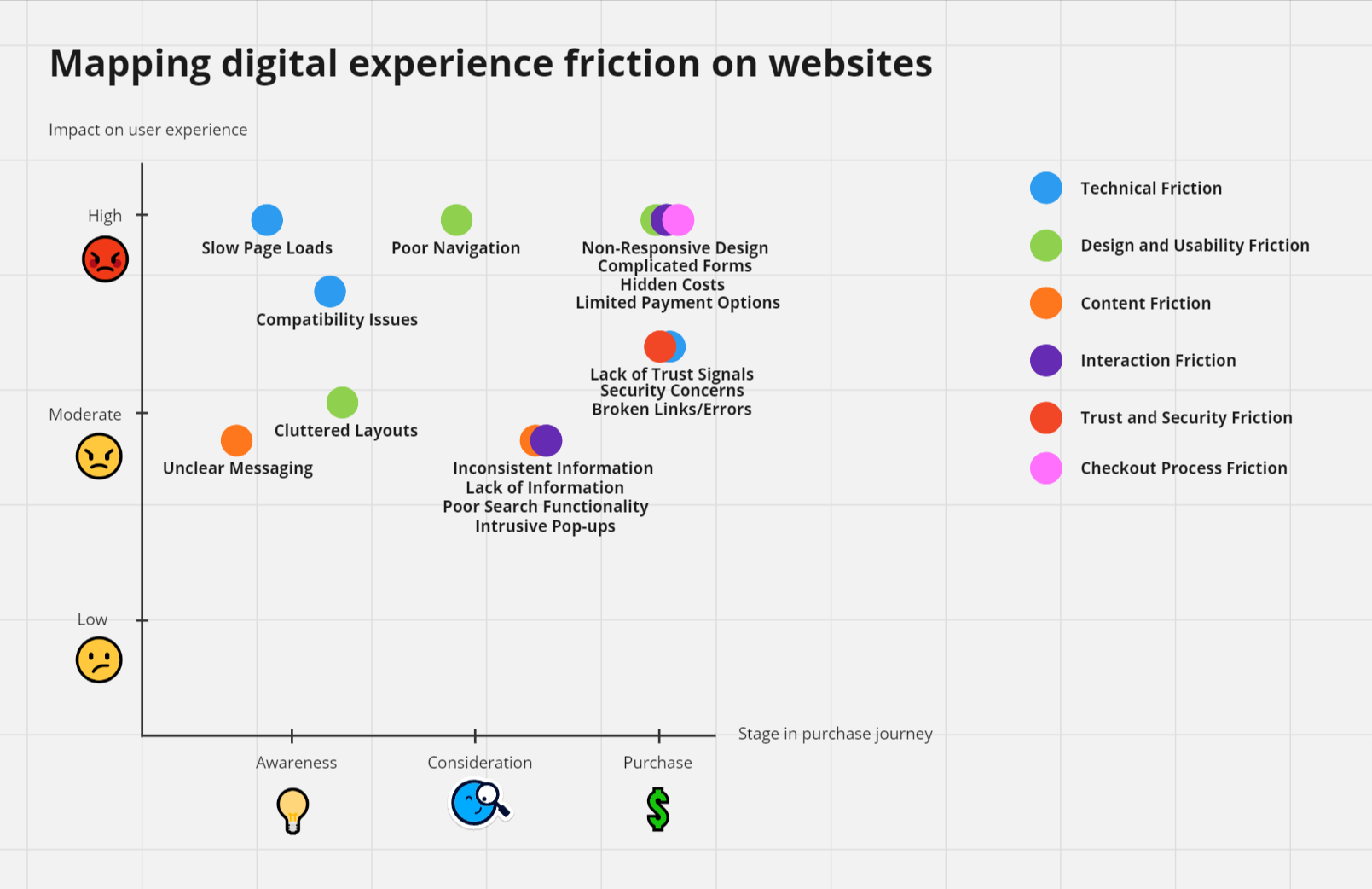
As we can see in the above graphic, friction can occur anywhere and isn't always to do with bugs or errors on your website. Unclear messaging, UX layouts and social proof features (such as product reviews) can all play their part.
How to address friction in your customer journey to unlock more conversions and revenue
The obvious place to look for digital experience insights is at those key moments when the website user is just about to turn into a paying customer but runs into speed bumps. These are moments of high user frustration such as technical issues like broken links or content issues such as the user unable to find any convincing product reviews to push them forward to conversion.
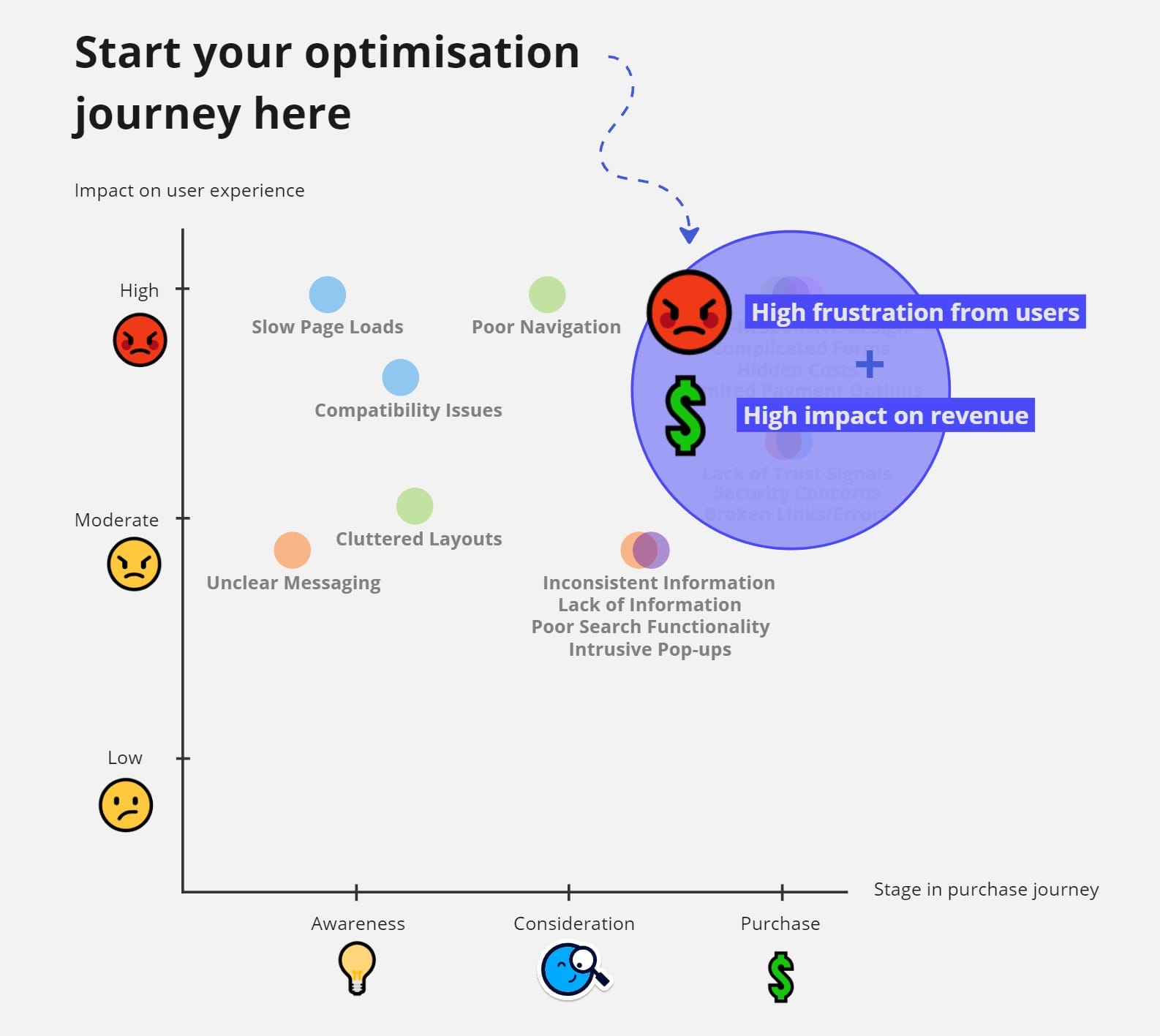
Clear insights help businesses focus on these high-priority areas first. In the below graphic, you can see a good approach could be to start at the pointy end of the funnel first and work backwards.

It's also wise to think beyond the purchase stage and prioritise by revenue impact. With clear insights you might discover friction from as early in the journey as the homepage caused by page content in the awareness stage has a higher revenue impact across all users than a technical issue further down the funnel.
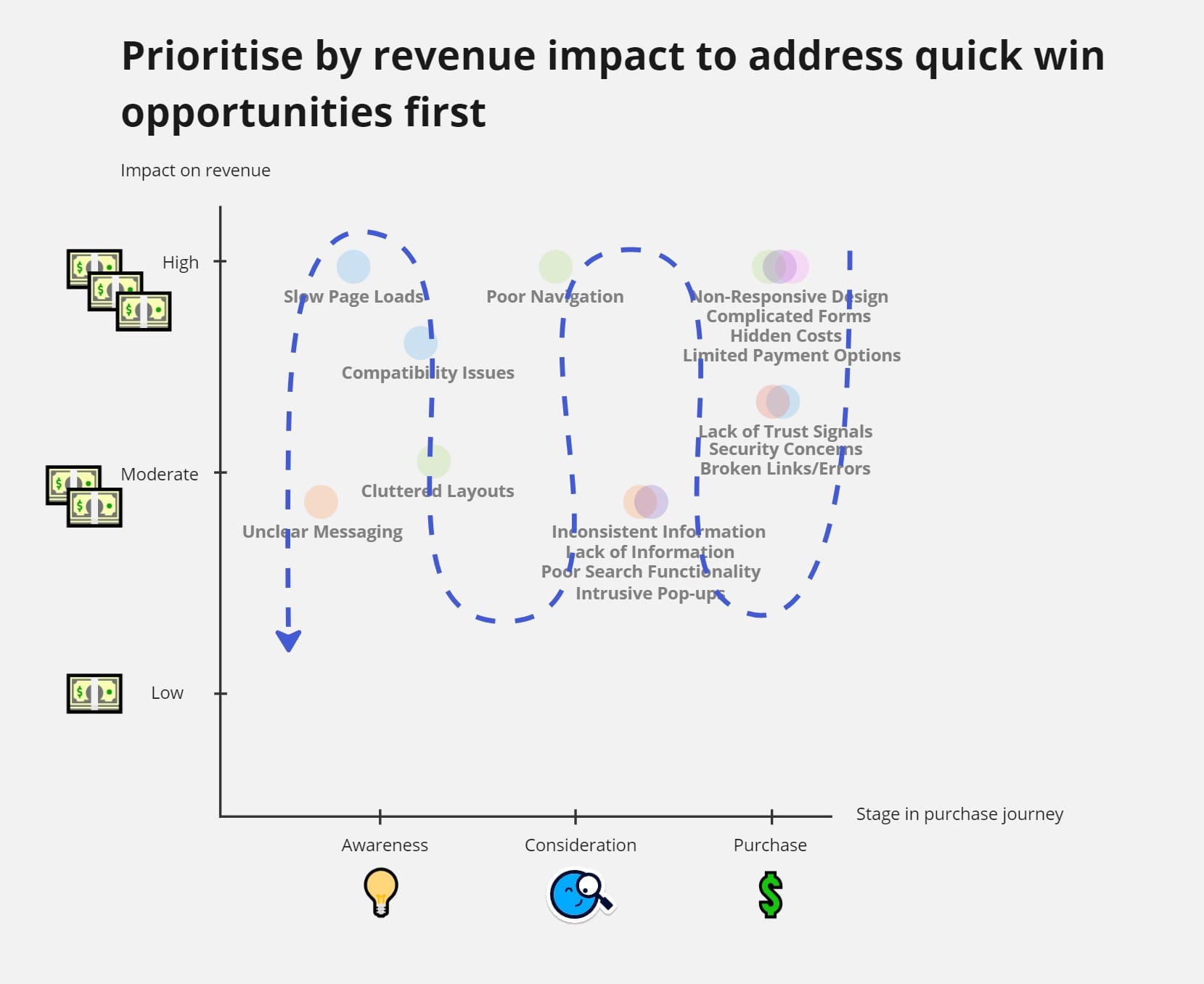
Every website design and product offering is unique and each business has a unique target market they're chasing so you'll need clear insights into how your website is performing on each of the above points. One solution is to reach out to the Insightech trials team. Insightech provides businesses like yours with clear digital experience insights to find and quickly address most of the friction points covered in this article. Using the platform you can also put a conversion rate and revenue impact value on each issue you've uncovered to make it easier to prioritise which user journeys to streamline first.
The trials team are unlocking an average of $300,000 in bonus revenue from users who go through the free, no-obligation trial process. Visit the trials page to learn more about how the trials process works and judge if it's a good fit for your business.

